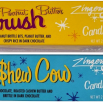Have you ever been duped after you picked one grocery item over another just because its label claimed several health benefits? It is likely that you have picked the product because of terms like fat-free or all natural. However, you later found out that these are fake claims. You are not the only one to have done so and later felt frustrated.
Findings of a recent survey showed that nearly 59 percent consumers have a difficult time trying to comprehend the nutrition levels mentioned on the labels.
The FDA has been cracking down on manufacturers whose product labels are either misleading or false, but still the fraud continues. In fact, in most instances the product labels are a market strategy and this makes it all the more important for you to carefully read and check the Nutrition Fact label as well as the ingredients list to understand if a food is really healthy, Health.com reports.
Here are a few tips that will help you to know what you are eating.
First and foremost, go through the ingredient lists carefully. You will find that the ingredients are listed according to their weight in a product. Look for terms like partially hydrogenated or hydrogenated oils, which imply that the product contains trans-fat. In addition, check if the products contain added sugars and "wheat flour" instead of "whole grains." Avoid products whose labels contain these terms.
You need to be cautious to avoid trans-fats from your diet completely. Monounsaturated and polyunsaturated are always healthy and, hence, consume them as much as possible.
It is also important to know the number of calories in each serving of a product. In fact, knowing the total calorie is vital, especially for people trying to check their weight. More than the calories from fats, it is important to know the type of fat contained in the product.
As far as your blood cholesterol content is concerned, this number is more or less irrelevant, as your cholesterol is subject to trans-fat and saturated fat content. Hence, ignore this and concentrated on the fat content of the product.
Although the carbohydrate content of a product is vital, it is unfortunate that the existing rules do not make it mandatory for a manufacturer distinctly mention the content of whole grains and processed grains in their product. Nor does the label of a food product make any mention of the dietary fiber content. Nevertheless, an adult male should consume over 38 grams of dietary fiber daily while the intake for an adult female should be over 25 grams.
Finally, the less sugar in a product, the better it is. However, labels on food products seldom distinguish between natural and added sugars. Therefore, check whether the product contains any added sugar, especially high-fructose corn syrup, according to Eating Well.









